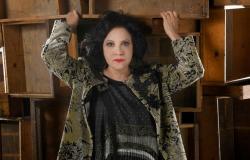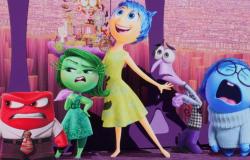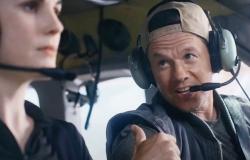Samantha the turtle who wanted to go to the moon is the title of the new children’s book written by Eleonora Casali, accompanied by illustrations by Matilde Speziali For Another Coffee Stories.
The author for this first story in the series “Stories Beyond Borders”is inspired by the exceptional feat of Samantha Cristoforetti first Italian woman to have crossed the borders of the Earth to explore space.
As he points out Anna Giada Altomarehead of the publishing house: “His courage and determination have not only expanded our knowledge of the universe, but have also opened new horizons in the collective imagination.”
“Samantha the turtle who wanted to go to the moon” is a story that accompanies the little ones as they reflect on the meaning of self-determination and friendship, on how empathy and support become fundamental ingredients to “find the sparkles in their eyes” and achieve their dreams.
Samantha the turtle who wanted to go to the moon
Synopsis of the book
Samantha, a young turtle just 80 years old had a big dream, to go to the moon. Discouraged by the worries of her friends who don’t consider it an undertaking within her reach, she decides one day not to talk about her anymore and to lock herself in her carapace.
One night, someone will knock on his door and thanks to a very long ladder, a pair of shiny skates and a backpack full of tasty leaves, what he never thought could happen again will happen.
A story that reflects on the meaning of self-determination and friendship, on how empathy and support become fundamental ingredients to “find the sparks in your eyes”.
Interview with the author
How did you discover your passion for writing and how did it come about?
I discovered my passion for writing in a completely natural way. Since I was a child, stories have always fascinated me.
I remember my weekly visits to the library of my elementary school, where I listened to the passionate readings of Matilde, the librarian. I spent hours choosing the book to borrow, and even today I remember the feeling of holding that precious “treasure” in my hands. This love for stories spontaneously led me to try to write my own.
I still have small notebooks full of stories and poems that I keep and that I reread every now and then. For a long time, I experienced writing as an intimate dimension, a personal refuge.
But in 2020, everything changed when I took a creative writing class. There, for the first time, I was invited to share my writings with the other participants.
Seeing my words resonate with other people, somehow touching their emotions and inspiring them, was an extraordinary experience that ignited in me the desire to dedicate myself to writing, not only as a private and introspective activity, but as a way to connect and communicate with others.
What was the emotion you felt when you signed the first publishing contract?
This is my second publishing contract, but it is my first publication aimed at children. The emotion I felt was one of great joy and satisfaction, it was a very intense moment because it represented the recognition of my work and the beginning of a new path.
Where do you find inspiration for your books?
For me, writing is a process that begins long before words find their way onto paper. It is a journey of deep listening to the reality that surrounds me, the people I meet and the voices that emerge from my inner self and above all a lot comes from what I read and have read over the years, I like to think of seeds inside me that without ask permission, sometimes, they flourish.
How did the book “Samantha the turtle who wanted to go to the moon” come about?
It all started with two episodes that happened on the same day in my class, while we were reflecting and discussing future dreams and plans. A little girl told me: “I would like to be an electronic engineer like my dad, but I don’t think an electronic engineer exists, so I’ll be a teacher or a nurse.” Her reflection struck me deeply. On the same day, to the same question “what is your dream?”, a child answered me with a long silence and a blank look that I don’t think I will forget, then he said this very sincere phrase to me: “I’m sorry teacher, I I can’t imagine it.”
These two episodes made me think deeply about the responsibility we adults have in supporting children’s ability to desire and imagine a better future. It is an urgent educational issue, especially to bridge the gender gap that persists in the imagination of future roles between girls and boys. It’s incredible to think that even today many girls believe that certain professions are exclusively male and others female. I firmly believe that children’s literature is a very powerful tool for broadening their views.
And this is where Samantha Cristoforetti, the first Italian astronaut, comes into play, inspiring the story of Samantha, a little turtle who ardently dreamed of going to the Moon. Everyone believed that it was an impossible feat, until the forest animals understand the importance of supporting her in this incredible adventure, and this completely changes her destiny.
What did you learn from writing this book?
It was a great exercise in coming out of my shell and trying to be part of a change. Furthermore, collaborating with Matilde Speziali, the illustrator of the story, was truly exciting. Discovering the magic of image and word together, a difficult and powerful combination.
What feeling do you have after writing a book?
I feel like I’m at the beginning of a new journey, a new season of my life. The writing process, for me, is deeply internal. Words emerge from hidden parts of myself and, once expressed, allow me to grow and renew myself.
What does writing children’s books mean to you?
As a teacher, I have the privilege of working with children on a daily basis, and I find writing for them extremely inspiring.
This allows me to get in touch with a primordial and hidden part of me, and it is a continuous challenge because it is necessary to constantly put myself on their level. Each story becomes an opportunity to see the world through their gaze, and this constantly pushes me to reinterpret reality in a process of continuous transformation.
Can you tell us what difficulties a writer encounters in writing a story aimed at children?
Writing for children must face the challenge of representing a world in which children can find themselves and recognize themselves, but also imagine different possibilities and new perspectives. This implies constant attention to their sensitivity and intelligence, always trying to speak with sincerity without oversimplifying reality and trivializing it.
What do you think can be done to introduce children to a love of reading?
First, it’s crucial to create an environment where children can easily access books every day. In preschool age, reading manifests itself through the sensorial exploration of the “book-object” and listening to stories read aloud by an adult, an experience that becomes crucial for their development and for creating a connection with children. books. As they grow, it is equally important to take them to the library or bookstore, allowing them to freely choose the books they want to read.
As Gianni Rodari says, it is important to give rise to the need for reading, which is a cultural need, not an instinct like eating and drinking.
If you could talk to your little readers about the story “Samantha the Turtle” what would you tell them?
I borrow a quote from Samantha Cristoforetti, which contains one of the most important messages of the book: “it takes courage not to do everything that others expect of you” and I add: dare, explore, dream beyond the borders!
The author
Eleonora Casali was born in 1993 in Assisi, today he lives in the Umbrian countryside. He completed his humanistic university studies between Perugia and Andalusia and is currently a primary school teacher.
Passionate about poetry and children’s fiction, in 2021 she founded the cultural association “una casa sulla Luna”, of which she is vice-president, where she organizes numerous educational courses and activities for children and families.
© Reproduction Reserved





